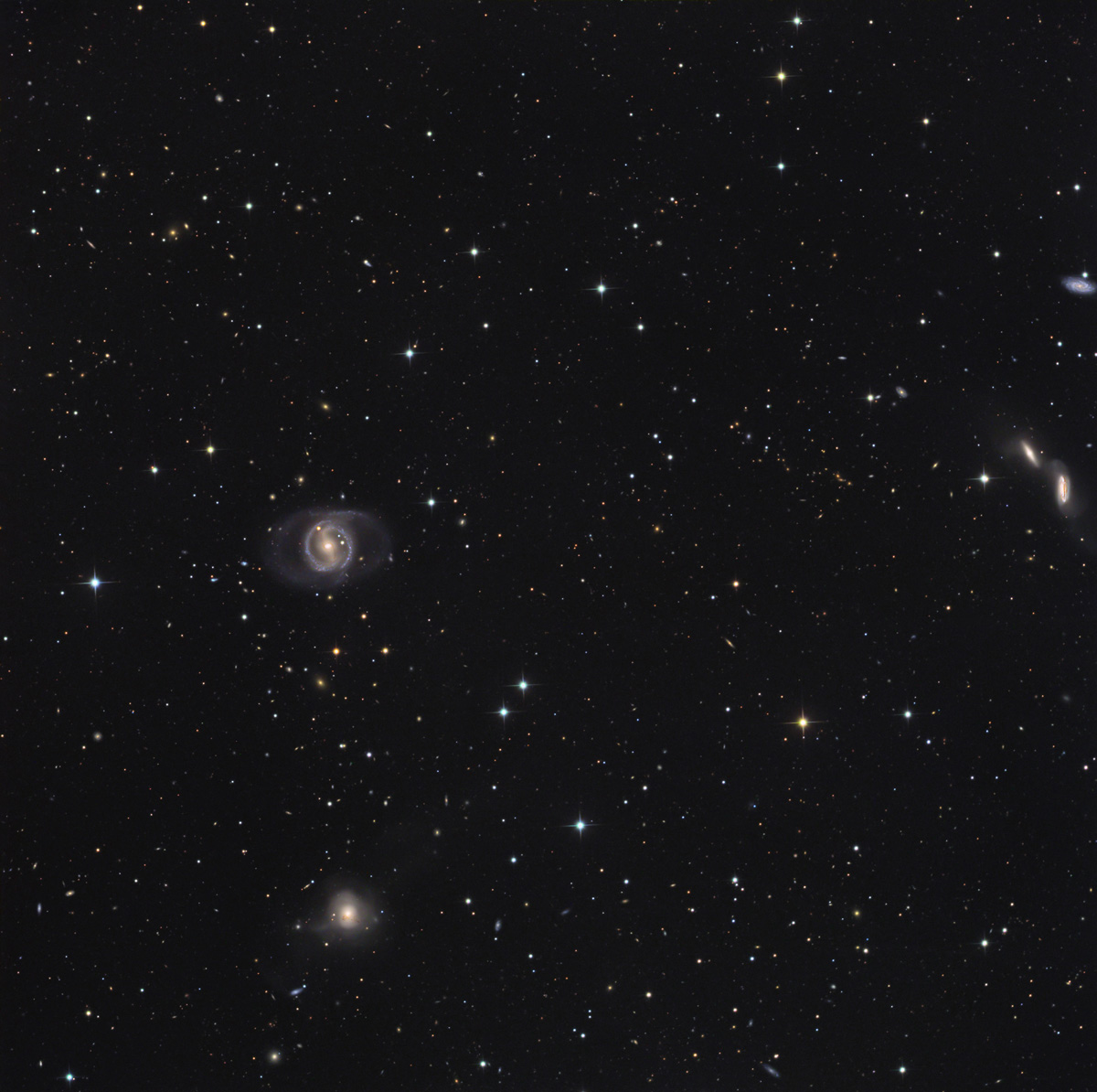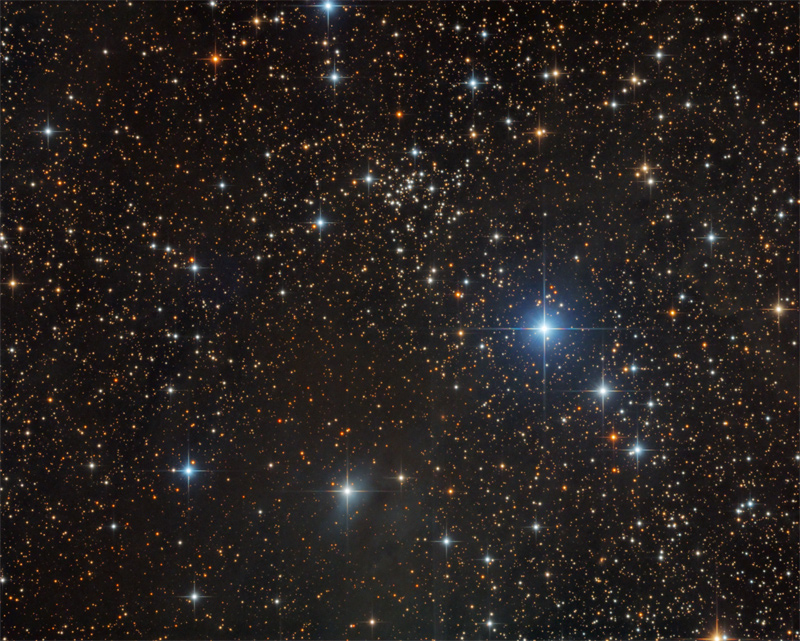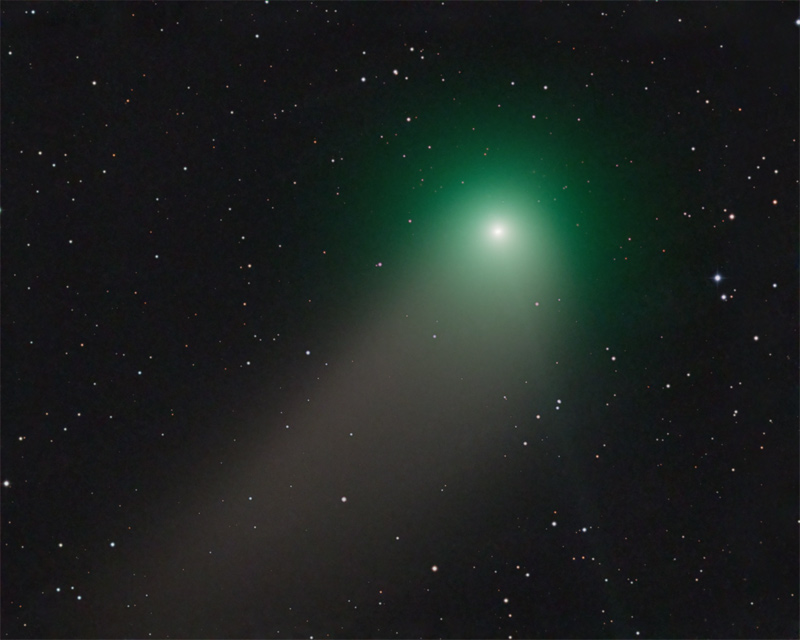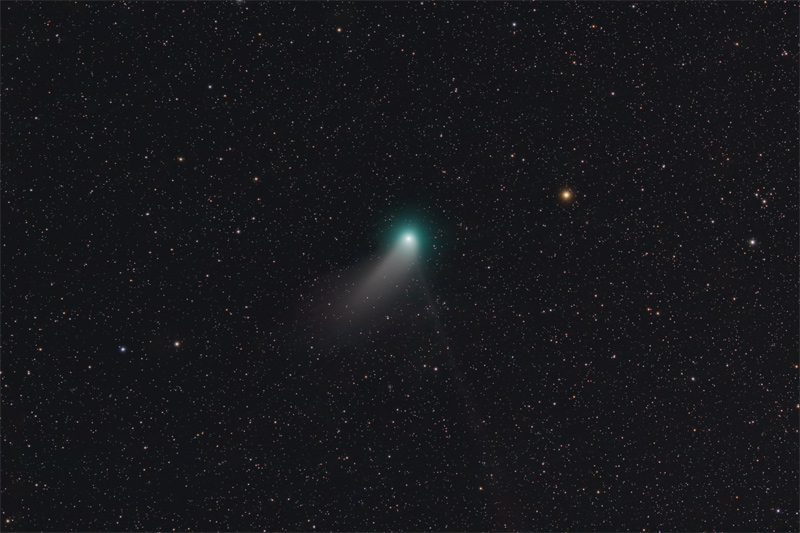Found images: 2017 August
-
starsurfer
- Stellar Cartographer
- Posts: 5409
- Joined: Thu Mar 15, 2012 7:25 pm
Re: Found images: 2017 August
M87
http://www.chart32.de/index.php/component/k2/item/85
Copyright: CHART32
Processing: Bernd Flach-Wilken
http://www.chart32.de/index.php/component/k2/item/85
Copyright: CHART32
Processing: Bernd Flach-Wilken
-
starsurfer
- Stellar Cartographer
- Posts: 5409
- Joined: Thu Mar 15, 2012 7:25 pm
-
starsurfer
- Stellar Cartographer
- Posts: 5409
- Joined: Thu Mar 15, 2012 7:25 pm
Re: Found images: 2017 August
NGC 5945
http://www.capella-observatory.com/Imag ... 45EtAl.htm
Copyright: Stefan Binnewies, Josef Pöpsel and Johannes Schedler NGC 5945 is the barred spiral galaxy.
http://www.capella-observatory.com/Imag ... 45EtAl.htm
Copyright: Stefan Binnewies, Josef Pöpsel and Johannes Schedler NGC 5945 is the barred spiral galaxy.
HEIC: A Double Discovery (IC 39, NGC 178)
A Double Discovery
ESA Hubble Picture of the Week | 2017 Aug 21
ESA Hubble Picture of the Week | 2017 Aug 21
[img3="Credit: ESA/Hubble, NASA"]https://cdn.spacetelescope.org/archives ... w1734a.jpg[/img3][hr][/hr]NGC 178 may be small, but it packs quite a punch. Measuring around 40 000 light-years across, its diameter is less than half that of the Milky Way, and it is accordingly classified as a dwarf galaxy. Despite its diminutive size, NGC 178 is busy forming new stars. On average, the galaxy forms stars totalling around half the mass of the Sun per year — enough to label it a starburst galaxy.
The galaxy’s discovery is an interesting, and somewhat confusing, story. It was originally discovered by American astronomer Ormond Stone in 1885 and dubbed NGC 178, but its position in the sky was recorded incorrectly — by accident the value for the galaxy’s right ascension (which can be thought of as the celestial equivalent of terrestrial longitude) was off by a considerable amount.
In the years that followed NGC 178 was spotted again, this time by French astronomer Stéphane Javelle. As no catalogued object occupied that position in the sky, Javelle believed he had discovered a new galaxy and entered it into the expanded Index Catalogue under the name IC 39. Later, American astronomer Herbert Howe also observed the object and corrected Stone’s initial mistake. Many years later, astronomers finally noticed that NGC 178 and IC 39 were actually the same object!
This image of NGC 178 comprises data gathered by the Wide Field Planetary Camera 2 aboard the NASA/ESA Hubble Space Telescope.
Know the quiet place within your heart and touch the rainbow of possibility; be
alive to the gentle breeze of communication, and please stop being such a jerk. — Garrison Keillor
alive to the gentle breeze of communication, and please stop being such a jerk. — Garrison Keillor
Re: HEIC: A Double Discovery (IC 39, NGC 178)
I'm a bit surprised at this. For one thing, the picture of NGC 178 doesn't suggest that the galaxy is forming huge numbers of stars, as the overall color of it is rather more orange than blue. But that may be due to the fact that the only filters used for this image are an ultraviolet one at 300 nm and an infrared one at 814 nm.bystander wrote:A Double Discovery
ESA Hubble Picture of the Week | 2017 Aug 21[img3="Credit: ESA/Hubble, NASA"]https://cdn.spacetelescope.org/archives ... w1734a.jpg[/img3][hr][/hr]NGC 178 may be small, but it packs quite a punch. Measuring around 40 000 light-years across, its diameter is less than half that of the Milky Way, and it is accordingly classified as a dwarf galaxy. Despite its diminutive size, NGC 178 is busy forming new stars. On average, the galaxy forms stars totalling around half the mass of the Sun per year — enough to label it a starburst galaxy.
The galaxy’s discovery is an interesting, and somewhat confusing, story. It was originally discovered by American astronomer Ormond Stone in 1885 and dubbed NGC 178, but its position in the sky was recorded incorrectly — by accident the value for the galaxy’s right ascension (which can be thought of as the celestial equivalent of terrestrial longitude) was off by a considerable amount.
In the years that followed NGC 178 was spotted again, this time by French astronomer Stéphane Javelle. As no catalogued object occupied that position in the sky, Javelle believed he had discovered a new galaxy and entered it into the expanded Index Catalogue under the name IC 39. Later, American astronomer Herbert Howe also observed the object and corrected Stone’s initial mistake. Many years later, astronomers finally noticed that NGC 178 and IC 39 were actually the same object!
This image of NGC 178 comprises data gathered by the Wide Field Planetary Camera 2 aboard the NASA/ESA Hubble Space Telescope.
This, too, seemed very surprising to me:
Really? The formation of new stars at a rate of half a solar mass a year is a lot? This paper from 2015 claims that the Milky Way churns out ~1.65 solar masses of new stars per year, and the Milky Way is so far from being a starburst galaxy!Space Telescope wrote:
NGC 178 may be small, but it packs quite a punch. Measuring around 40 000 light-years across, its diameter is less than half that of the Milky Way, and it is accordingly classified as a dwarf galaxy. Despite its diminutive size, NGC 178 is busy forming new stars. On average, the galaxy forms stars totalling around half the mass of the Sun per year — enough to label it a starburst galaxy.
Then again, the Milky Way is a pretty big and massive galaxy, and because the sheer size and mass of it, it contains many starforming molecular clouds. Small galaxies simply don't have so much raw material to work with. IC 10, a dwarf galaxy that is really classified as a starburst galaxy, only produces 0.04–0.08 solar masses per year, according to Wikipedia!
Ann
Color Commentator
Totality: 2017 Aug 21, Salem, OR
See the moon in incredible detail even as the sun's corona swirls around it.
Astronomer Jay Pasachoff took some incredible photos of the eclipse's totality from Salem, Oregon, and Christian Lockwood merged them into one stunning shot.
Photo credit: Jay Pasachoff and Williams College Eclipse Expedition/Compositing by Christian Lockwood
NOVA | PBS on Facebook
Astronomer Jay Pasachoff took some incredible photos of the eclipse's totality from Salem, Oregon, and Christian Lockwood merged them into one stunning shot.
Photo credit: Jay Pasachoff and Williams College Eclipse Expedition/Compositing by Christian Lockwood
NOVA | PBS on Facebook
Know the quiet place within your heart and touch the rainbow of possibility; be
alive to the gentle breeze of communication, and please stop being such a jerk. — Garrison Keillor
alive to the gentle breeze of communication, and please stop being such a jerk. — Garrison Keillor
-
Elias Chasiotis
- Ensign
- Posts: 53
- Joined: Tue Aug 04, 2009 11:59 am
Re: Found images: 2017 August
The best photo of the total solar eclipse i've seen till now. This image is absolutely stunning! Copyright Michael Shainblum https://www.instagram.com/p/BYEbijFlOJB/
https://m.facebook.com/shainblumphoto/p ... &source=54
https://m.facebook.com/shainblumphoto/p ... &source=54
-
Elias Chasiotis
- Ensign
- Posts: 53
- Joined: Tue Aug 04, 2009 11:59 am
-
starsurfer
- Stellar Cartographer
- Posts: 5409
- Joined: Thu Mar 15, 2012 7:25 pm
Re: Found images: 2017 August
Crescent Nebula (NGC 6888)
http://www.straightontillmorning.me/Ast ... xv4WSbV/X3
Copyright: Hytham Abu-Safieh
http://www.straightontillmorning.me/Ast ... xv4WSbV/X3
Copyright: Hytham Abu-Safieh
-
starsurfer
- Stellar Cartographer
- Posts: 5409
- Joined: Thu Mar 15, 2012 7:25 pm
-
starsurfer
- Stellar Cartographer
- Posts: 5409
- Joined: Thu Mar 15, 2012 7:25 pm
Re: Found images: 2017 August
Partial solar eclipse
http://www.capella-observatory.com/Imag ... pse_31.htm
Copyright: Stefan Binnewies
http://www.capella-observatory.com/Imag ... pse_31.htm
Copyright: Stefan Binnewies
-
starsurfer
- Stellar Cartographer
- Posts: 5409
- Joined: Thu Mar 15, 2012 7:25 pm
-
starsurfer
- Stellar Cartographer
- Posts: 5409
- Joined: Thu Mar 15, 2012 7:25 pm
-
starsurfer
- Stellar Cartographer
- Posts: 5409
- Joined: Thu Mar 15, 2012 7:25 pm
Re: Found images: 2017 August
Re: Found images: 2017 August
The motion provides for a cool 3D effect.starsurfer wrote:Jupiter http://www.glitteringlights.com/Images/ ... -p64RR8p/A Copyright: Marco Lorenzi
HEIC: From Microwaves to Megamasers
From Microwaves to Megamasers
ESA Hubble Picture of the Week | 2017 Aug 28
ESA Hubble Picture of the Week | 2017 Aug 28
[img3="Credit: ESA/Hubble & NASA"]https://cdn.spacetelescope.org/archives ... w1735a.jpg[/img3][hr][/hr]Phenomena across the Universe emit radiation spanning the entire electromagnetic spectrum — from high-energy gamma rays, which stream out from the most energetic events in the cosmos, to lower-energy microwaves and radio waves.
Microwaves, the very same radiation that can heat up your dinner, are produced by a multitude of astrophysical sources, including strong emitters known as masers (microwave lasers), even stronger emitters with the somewhat villainous name of megamasers, and the centres of some galaxies. Especially intense and luminous galactic centres are known as active galactic nuclei. They are in turn thought to be driven by the presence of supermassive black holes, which drag surrounding material inwards and spit out bright jets and radiation as they do so.
The two galaxies shown here, imaged by the NASA/ESA Hubble Space Telescope, are named MCG+01-38-004 (the upper, red-tinted one) and MCG+01-38-005 (the lower, blue-tinted one). MCG+01-38-005 is a special kind of megamaser; the galaxy’s active galactic nucleus pumps out huge amounts of energy, which stimulates clouds of surrounding water. Water’s constituent atoms of hydrogen and oxygen are able to absorb some of this energy and re-emit it at specific wavelengths, one of which falls within the microwave regime. MCG+01-38-005 is thus known as a water megamaser!
Astronomers can use such objects to probe the fundamental properties of the Universe. The microwave emissions from MCG+01-38-005 were used to calculate a refined value for the Hubble constant, a measure of how fast the Universe is expanding. This constant is named after the astronomer whose observations were responsible for the discovery of the expanding Universe and after whom the Hubble Space Telescope was named, Edwin Hubble.
Know the quiet place within your heart and touch the rainbow of possibility; be
alive to the gentle breeze of communication, and please stop being such a jerk. — Garrison Keillor
alive to the gentle breeze of communication, and please stop being such a jerk. — Garrison Keillor
-
starsurfer
- Stellar Cartographer
- Posts: 5409
- Joined: Thu Mar 15, 2012 7:25 pm
-
starsurfer
- Stellar Cartographer
- Posts: 5409
- Joined: Thu Mar 15, 2012 7:25 pm
-
starsurfer
- Stellar Cartographer
- Posts: 5409
- Joined: Thu Mar 15, 2012 7:25 pm
-
starsurfer
- Stellar Cartographer
- Posts: 5409
- Joined: Thu Mar 15, 2012 7:25 pm
Re: Found images: 2017 August
Comet Johnson and NGC 5566
http://www.astrostudio.at/2_Bright%20Co ... f6942be1e9
Copyright: Gerald Rhemann
http://www.astrostudio.at/2_Bright%20Co ... f6942be1e9
Copyright: Gerald Rhemann
-
Elias Chasiotis
- Ensign
- Posts: 53
- Joined: Tue Aug 04, 2009 11:59 am
Re: Found images: 2017 August
A breathtaking closeup timelapse of the total solar eclipse, including the partial phases. Copyright: James Lowenthal.
-
starsurfer
- Stellar Cartographer
- Posts: 5409
- Joined: Thu Mar 15, 2012 7:25 pm
Re: Found images: 2017 August
NGC 206
http://astro-koop.de/?attachment_id=1906
Copyright: Stefan Heutz, Wolfgang Ries and Michael Breite
http://astro-koop.de/?attachment_id=1906
Copyright: Stefan Heutz, Wolfgang Ries and Michael Breite
ESO: The VLT’s Night Light
The VLT’s Night Light
ESO Picture of the Week | 2017 Sep 04
ESO Picture of the Week | 2017 Sep 04
This image, taken by ESO Photo Ambassador Petr Horálek, captures the moment that Yepun (UT4), one of the four 8.2-metre Unit Telescopes comprising ESO’s Very Large Telescope (VLT), shoots a laser beam up into the dark night sky over ESO’s Paranal Observatory in Chile.
The laser shown in this image acts as an artificial star, known as a Laser Guide Star, and it is used to help astronomers adjust for the blurring and distorting effects of the Earth’s atmosphere. When observing a patch of sky, astronomers set up a laser guide star nearby and measure the tiny fluctuations in its image. The VLT’s adaptive optics system can then use this reference to correct for the changes and distortions in the intervening atmosphere and produce the sharpest images possible in the main observations.
Looming over Yepun is the Large Magellanic Cloud (LMC), a barred spiral galaxy that orbits the Milky Way. A faint white glow marks the location of older stellar populations within the LMC, while the iridescent hues of magenta and blue mark young stellar nurseries.
The LMC, as well as its smaller namesake, the Small Magellanic Cloud (SMC), have been studied many times by ESO telescopes over the years. Its many cosmic delights, including nebulae (eso0332) and star clusters (eso1133), can be seen in detail due to their proximity, and provide amateur and professional astronomers alike with breathtaking targets for observation.
Know the quiet place within your heart and touch the rainbow of possibility; be
alive to the gentle breeze of communication, and please stop being such a jerk. — Garrison Keillor
alive to the gentle breeze of communication, and please stop being such a jerk. — Garrison Keillor
HEIC: Mysterious Supernovae (NGC 5559)
Mysterious Supernovae
ESA Hubble Picture of the Week | 2017 Sep 04
ESA Hubble Picture of the Week | 2017 Sep 04
[img3="Credit: ESA/Hubble & NASA"]https://cdn.spacetelescope.org/archives ... w1736a.jpg[/img3][hr][/hr]Like firecrackers lighting up the sky on New Year’s Eve, the majestic spiral arms of NGC 5559 are alight with new stars being born. NGC 5559 is a spiral galaxy, with spiral arms filled with gas and dust sweeping out around the bright galactic bulge. These arms are a rich environment for star formation, dotted with a festive array of colours including the newborn stars glowing blue as a result of their immensely high temperatures.
NGC 5559 was discovered by astronomer William Herschel in 1785 and lies approximately 240 million light-years away in the northern constellation of Boötes (the herdsman)
In 2001, a calcium-rich supernova called 2001co was observed in NGC 5559. Calcium-rich supernovae (Ca-rich SNe) are described as “fast-and-faint”, as they're less luminous than other types of supernovae and also evolve more rapidly, to reveal spectra dominated by strong calcium lines. 2001co occurred within the disc of NGC 5559 near star-forming regions, but Ca-rich SNe are often observed at large distances from the nearest galaxy, raising curious questions about their progenitors.
Know the quiet place within your heart and touch the rainbow of possibility; be
alive to the gentle breeze of communication, and please stop being such a jerk. — Garrison Keillor
alive to the gentle breeze of communication, and please stop being such a jerk. — Garrison Keillor
-
starsurfer
- Stellar Cartographer
- Posts: 5409
- Joined: Thu Mar 15, 2012 7:25 pm
Re: Found images: 2017 August
Shouldn't the September threads be started now?






